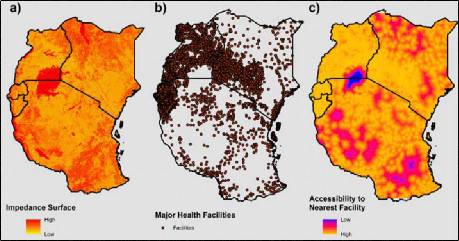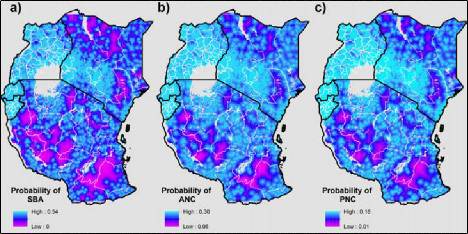WorldPop Projects
High resolution mapping of maternal health access inequities
Project leads: Andy Tatem, Cori Ruktanonchai
Funding: Open Health Initiative of the East African Community, NORAD
Despite substantial in nearly halving maternal deaths worldwide, pregnancy remains risky for many of the world’s most vulnerable women, and inequalities persist across the socioeconomic spectrum. Geographic accessibility to health facilities represents a fundamental barrier to utilisation of maternal and newborn health (MNH) services, driving these historically hidden spatial pockets of regionalized inequalities. To examine utilisation of MNH care in East Africa as an emergent property of accessibility, we visualise geographic accessibility to the nearest health facility using a dataset of nearly 10,000 georeferenced health facilities, and utilise statistical models to predict the probability of: 1) skilled birth attendance, 2) receiving 4+ antenatal care visits at time of delivery, and 3) receiving a postnatal health check-up within 48 hours of delivery. We apply results from our statistical models to the accessibility surface to visualise the probabilities of obtaining MNH care, highlighting high-resolution spatial heterogeneity and subnational inequities in receiving care before, during, and after pregnancy. These applications demonstrate how spatial approaches can inform policy efforts and promote evidence-based decision-making, and are particularly pertinent to the East African policy makers to accelerate progress in women’s, children’s and adolescent’s health and equity within the framework of the Sustainable Development Goals.




